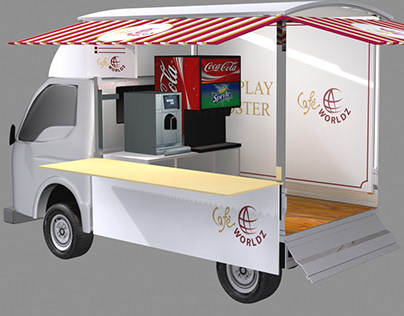Project Report For Mobile Meals Centre
Introduction
Project Report for Mobile Meals Centre is as follows.
Mobile meals centers are essentially mobile food service units equipped with kitchens and appliances, allowing them to prepare and serve hot, nutritious meals on the go. These centers often operate from specially designed vehicles such as food trucks or trailers, which are equipped with cooking facilities, storage space, and serving counters. They are strategically positioned in areas with high demand, such as busy urban centers, remote locations, or regions affected by natural disasters or emergencies.
The primary goal of mobile meals centers is to cater to diverse populations, including low-income individuals, seniors, students, and the homeless. By bringing food directly to the people, these centers eliminate barriers like distance, transportation, and financial constraints that may prevent individuals from accessing regular food establishments. This innovative approach not only ensures that individuals receive nourishing meals but also promotes social cohesion by fostering a sense of community and inclusion.
The menu offerings of mobile meals centers often vary, ranging from traditional meals to ethnic cuisines or specialized dietary options. These centers prioritize providing well-balanced meals that meet nutritional guidelines, incorporating fresh ingredients whenever possible. Some mobile meals centers also collaborate with local farmers and suppliers to source ingredients, thereby supporting local food systems and promoting sustainability.

Features Of Mobile Meals Centre
Mobility :- Mobile meals centres, unlike typical brick-and-mortar restaurants, may travel from one area to another, allowing them to reach a larger consumer base. They can function in a variety of neighbourhoods, office buildings, parks, events, and other public locations. This mobility allows them to respond to changing customer demands and capitalise on high-traffic locations.
Food Truck Design :- Mobile meal centres are frequently configured as food trucks with kitchen facilities to produce and serve food on-site. These trucks are often outfitted with cooking equipment such as grills, fryers, ovens, refrigerators, and ingredient storage areas. They may also incorporate serving windows or client interaction counters.
Menu Variety :- Mobile meals centers offer a wide range of food options to cater to various tastes and dietary preferences. Their menus can include items like burgers, sandwiches, tacos, salads, ethnic cuisines, desserts, and beverages. Some mobile meals centers specialize in specific types of cuisine or focus on providing healthier alternatives.
Convenience and Accessibility :- Customers benefit from the convenience of mobile meal centers. They are easily accessible during lunch breaks, festivals, or when travelling. Customers can order food fast and have it produced fresh in front of them, eliminating the need for a separate kitchen or eating room.
Regulatory Compliance :- Mobile meal centres, like traditional restaurants, must follow health and safety rules enforced by municipal authorities. To ensure the quality and safety of the meals they serve, they must follow proper food handling, storage, and preparation practises.
Community Engagement :- Mobile meals centers can foster a sense of community by participating in local events, supporting charitable causes, or collaborating with other businesses. They often become an integral part of the neighborhoods they serve and contribute to the local economy.
Market Potential Of Mobile Meals Centre
The global mobile food services market is expected to be worth $ 37.61 billion by 2032, up from $ 21 billion in 2022, with a 6% CAGR from 2022 to 2032.
A mobile food service business idea involves preparing and selling food from any vehicle. Trucks or vans are typically employed for this function since many items are involved in the production of food for many people, and trucks and vans provide us with the leisure and room to store all of these items.
During the projection period, the food segment’s market share rise will be significant for total market growth. The segment’s rise is being driven by an increasingly urbanized population instilling new habits and developing preferences for international food trends. Other variables include changing lifestyles, shifting food tastes, rising urbanization, and an increase in the number of nuclear households.
Food-based E-Commerce app development is a big benefit to mobile food services. People are not required to visit the location; instead, they can order food through mobile apps. This is expected to boost mobile food service sales. Aside from E-Commerce, social media has the potential to expand the mobile food services business. If a customer submits a review regarding a store, it will quickly become available to a large number of others. Because of word of mouth, more and more individuals may become consumers of that store, resulting in an increase in the market for mobile food services.
Project Report Sample On Mobile Meals Centre
Need Help?
Create 100% Bankable Project Report
